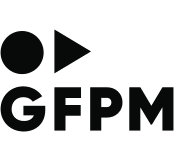Akkordstrukturen im verzerrten Rockgitarrenriff. Eine experimentelle Studie physikalischer und psychoakustischer Faktoren
Abstract
Distortion as a significant feature of electric guitar playing is indispensable to rock music. Despite its relevance for the genre, distortion has not received much academic attention so far. This article aims at two interrelated issues. Firstly, it analyses physical and psychoacoustic characteristics of guitar distortion. Secondly, the effect of distortion on rhythm guitar of early hard rock and heavy metal is examined. The experimental results highlight the relevance of temporal frequency development and spectral fluctuations while questioning the dominance of roughness as the primary factor of dissonance in research on the distorted electric guitar. The findings also extend our knowledge about the aspects contributing to the distorted guitar’s distinct sound. The reasons lie mainly in frequency-related compression and the rough timbre due to the perception of partial and combination tones in the
critical bandwidth and inharmonic string spectra. The outcome indicates that the interplay of physical and psychoacoustic aspects is essential for the development of genre-specific styles of guitar playing and riff construction.





